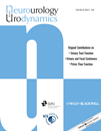Abstract
Aims
Going to the toilet is an essential everyday event. Normally, we do not give much thought to the sensations and factors that trigger voiding behavior: we just go. For many people, this apparently simple task is complicated and dominates their life. They have strong sensations and sudden desires to void, often resulting in incontinence. It is therefore important that we understand the origins for this functional change and identify means to alleviate it.
Methods
Literature survey.
Results
A considerable body of work has focused on this problem and ideas and concepts on the nature of bladder sensations are embedded in the literature. In this paper we argue the necessity to return to first principles and a re-examination of the problem. We explore the use of focus groups to identify relevant bladder sensation and what triggers ‘bladder’ behavior. We argue that there are differences in what can be described as ‘introspective bladder sensations’ and the sensations reported immediately before a void, ‘void sensations’. Finally, we propose an alternative model describing how peripheral information generating ‘introspective sensations’ and ‘void sensations’ might be different but interrelated sensations. By exploring such ideas and identifying such complexity it is our intention to stimulate debate and generate further research in the field in order to understand better the physiology of bladder sensation and the pathology of increased urge, frequency and incontinence.
Conclusions
Review of the literature on bladder sensation and the established ideas suggests that we might be missing something and the problem of normal and increased sensation and of urgency may be much more complex. Neurourol. Urodynam. 30:1220–1226, 2011. © 2011 Wiley-Liss, Inc.




